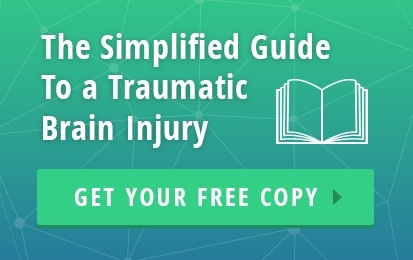A focal brain injury, by contrast to a diffuse brain injury, is concentrated in one region of the brain. Though having an injury in a specific region in the brain generally makes the trajectory of the injury easier to predict, focal brain injuries are neither more or less serious than diffuse brain injuries.
Instead, their effects—like with all brain injuries—depend on the location and severity of the injury, access to quality care and rehabilitation, a strong commitment to recovery, and a bit of luck. Brain injuries are unpredictable, with some people recovering fully and others languishing for years, so while your doctor can give you a reasonable prognosis, no one can make any guarantees about your recovery.
What Causes Focal Brain Injuries?
Focal brain injuries occur when there is an injury to the brain in a single location. Note that this does not mean that only a single brain function will be affected, since small regions of the brain can control multiple—and seemingly unrelated—functions. Some of the most common causes of focal brain injuries include:
- A blow to the head, particularly by a sharp object. Car accidents, violent assaults, and sudden falls can all lead to this type of injury.
- A blood clot that travels to the brain, blocking oxygen from a specific brain region.
- A brain lesion that cuts off the blood supply to a specific brain region.
Diffuse brain injuries can be caused by these same factors; the real line of demarcation is whether the injury is at a single spot or multiple regions. However, diffuse brain injuries more commonly result from shaking, so if you've been in a car accident and suffered a whiplash injury or your child is suffering from shaken baby syndrome, a focal brain injury is unlikely.
Types of Focal Brain Injuries
Focal brain injuries come in two broad categories: open and closed. Open injuries, as the name implies, are open due to a physical cut or wound, such as when a pole creates a laceration in the skull. Closed injuries are not open to the elements, and are more commonly the result of falls, blows, and medical catastrophes such as strokes.
Doctors sometimes further classify focal brain injuries into these categories:
- An intraventricular hemorrhage is bleeding within the brain's ventricles.
- A subdural hemorrhage occurs when there is bleeding between the brain's arachnoid and dura matter.
- An intracerebral hemorrhage occurs within the cerebrum—the brain's main tissue.
- A cerebral contusion is a brain bruise, usually resulting from the brain hitting the skull.
- A cerebral laceration occurs when the brain's pia-arachnoid is lacerated.
- An epidural hemorrhage occurs when the brain bleeds in between the skull and the dura matter.
What Are the Symptoms of a Focal Brain Injury?
It is impossible to diagnose a focal brain injury based solely on symptoms, and all brain injuries warrant immediate medical attention. Even if you have no symptoms at all, if you have been violently shaken or suffered a car accident or blow to the head, you need immediate medical attention.
The specific symptoms of a focal brain injury depend upon the brain region affected. It's common to experience symptoms that affect multiple domains of functioning, since an injury confined to a single brain region can still affect multiple functions. For instance, you might have trouble moving your left side and difficulty with working memory.
If you experience any of the following symptoms, seek immediate medical attention:
- Difficulty staying awake.
- Difficulty concentrating.
- Changes in mood or personality.
- Sudden, unexplained fear, paranoia, anxiety, or depression.
- Difficulty speaking or understanding speech.
- Numbness, limpness, or tingling on either side of the body.
- Slurred speech.
- Ringing in your ears.
- Intense headache.
- Changes in vision or consciousness.
Treatment and Prognosis for Focal Brain Injuries
It's possible to heal from focal brain injuries, but your prognosis is dependent on a range of factors, including your overall health, the location and severity of your injury, how promptly you sought medical care, the quality of care you received, and your willingness to stick with a rehabilitation program.
You may need speech, occupational, or physical therapy, in addition to life skills coaching, psychotherapy, and education about your condition. At first, the recovery process can feel slow and frustrating. Over time, things become easier. Ultimately, the goal of treatment is to help you brain re-learn new ways to do old tasks.
Your doctor will also want to minimize the possibility of a subsequent brain injury, particularly if you suffered a stroke or brain lesion. For this reason, you may need to make lifestyle changes, adopt an exercise regimen, change your diet, or learn to more effectively manage your stress. Don't be afraid to ask your doctor questions about what you can do to maximize your recovery, and never shy away from seeking a second opinion if you disagree with your doctor's recommendations.
Resources for Further Reading:






